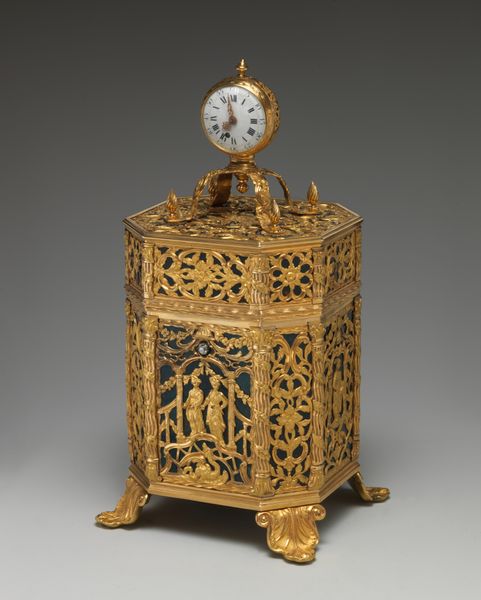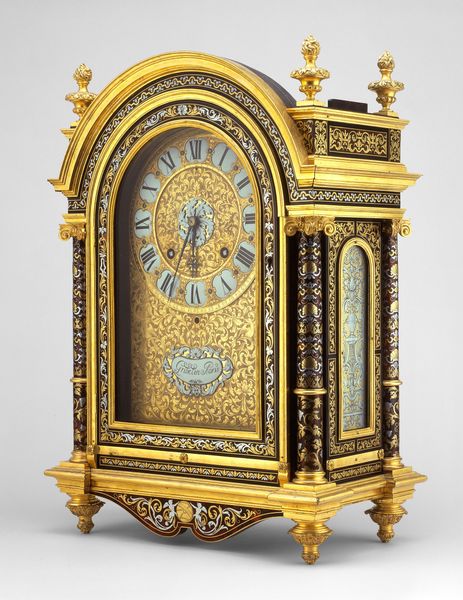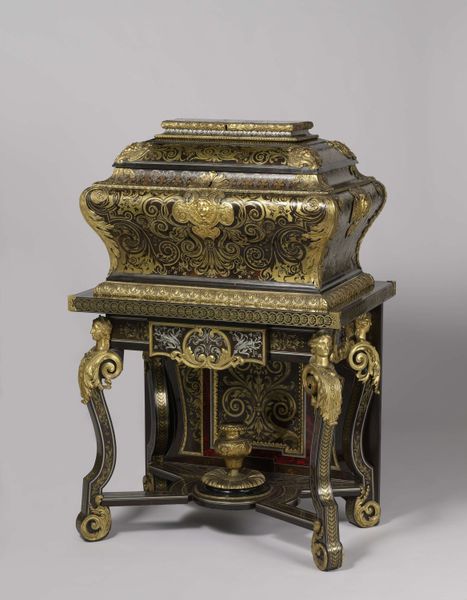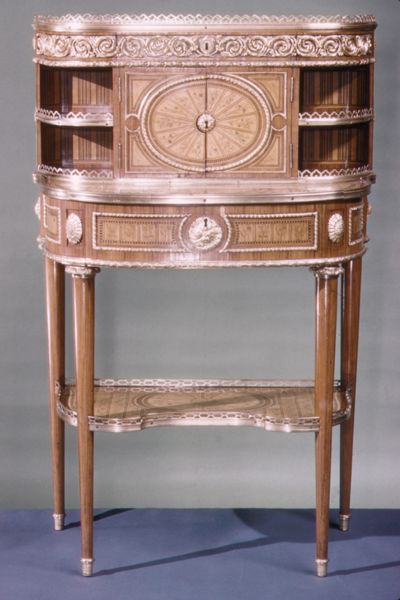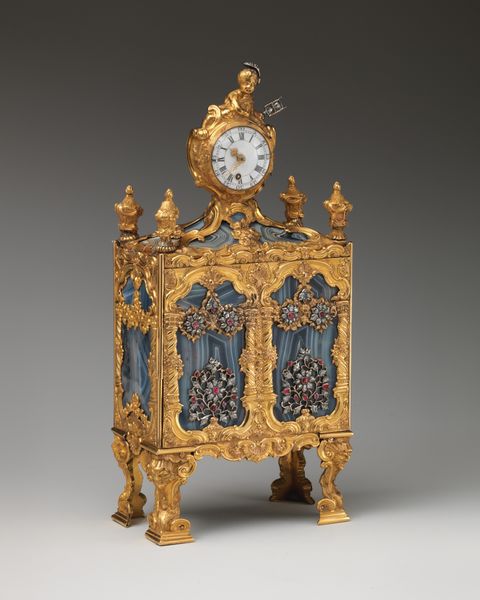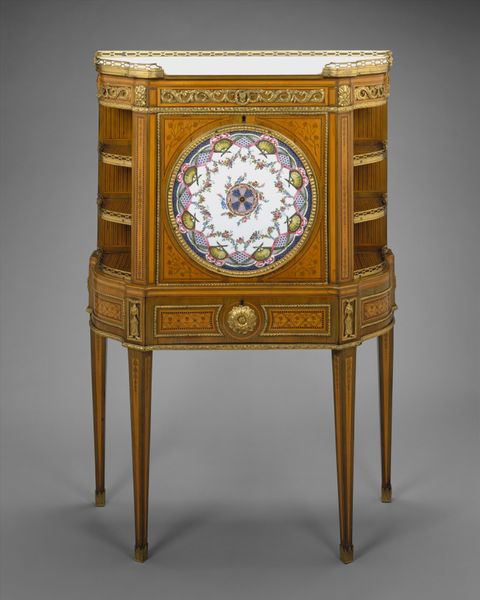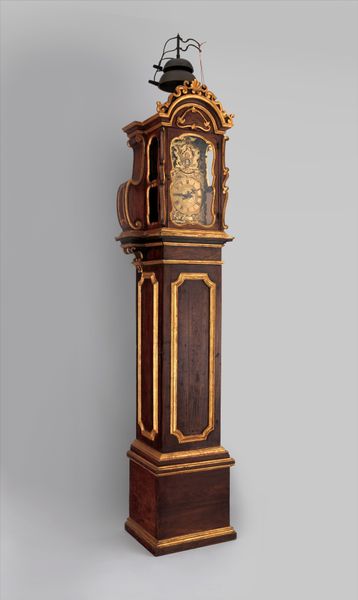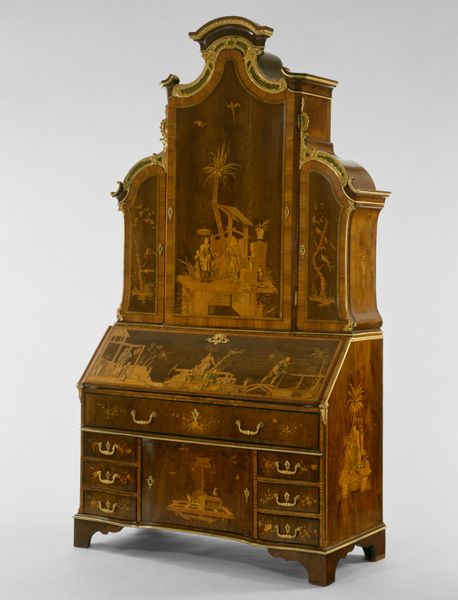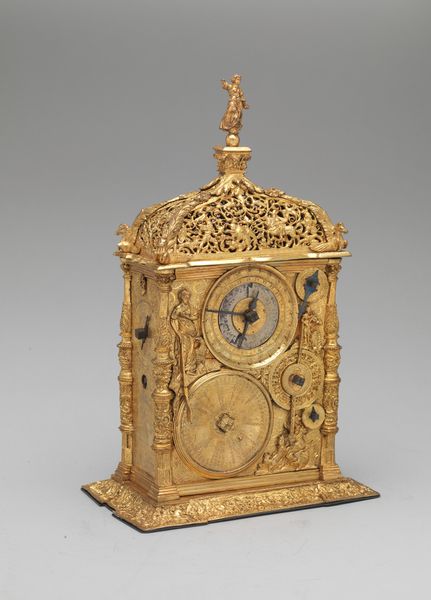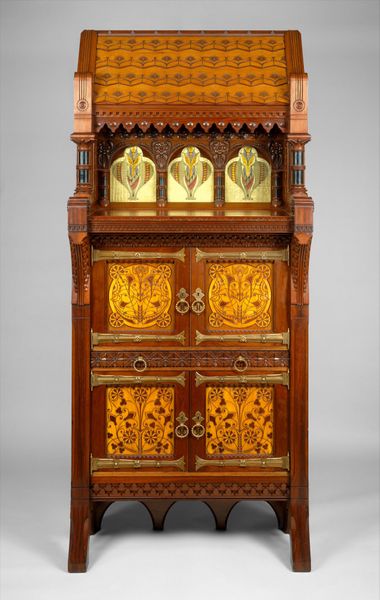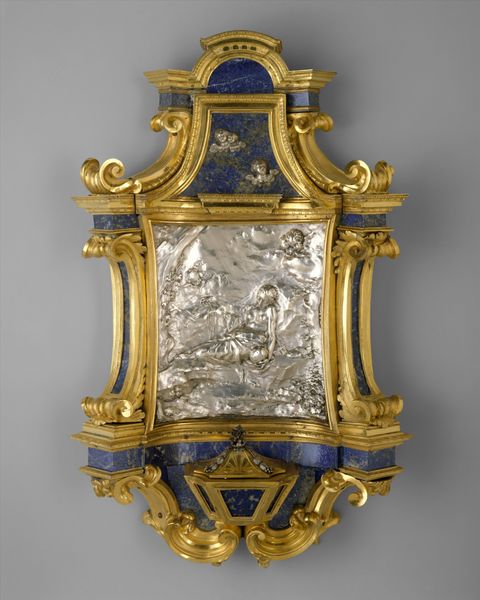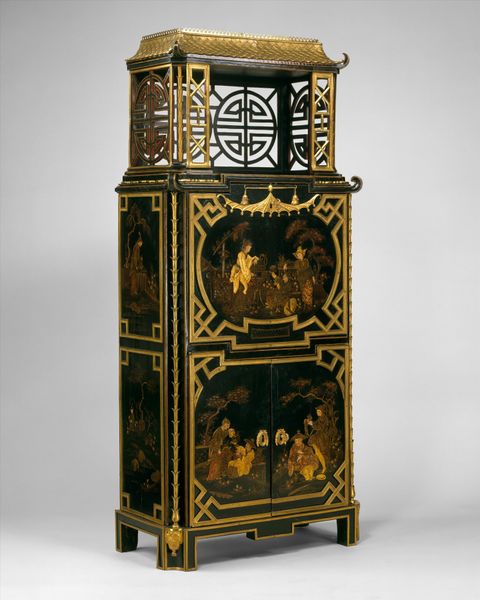
mixed-media, carving, metal, gold, wood
#
neoclacissism
#
wood texture
#
mixed-media
#
carving
#
metal
#
gold
#
furniture
#
traditional architecture
#
geometric
#
wooden texture
#
wood
#
decorative-art
Dimensions: 102 x 55 3/4 x 28 1/8 in. (259.1 x 141.6 x 71.4 cm)
Copyright: Public Domain
Curator: Standing before us is a Secretary-bookcase, crafted sometime between 1825 and 1835 by Robert Fisher. The piece utilizes a mixed-media approach incorporating wood, carving, metal, and gold. Editor: The immediate impression is overwhelming. The combination of dark wood and intense gold creates such a regal and theatrical effect! It almost feels like a stage set. Curator: Absolutely. Looking closely, the bookcase embodies Neoclassical ideals, reimagined, of course, through the lens of decorative art. Its architectural form recalls Greek temples, translated into domestic utility. Consider the materials, the dark wood a product of global trade routes and colonial exploitation. What power structures underpinned such a seemingly innocent display? Editor: Right, let’s delve into the woodworking and metalwork. This isn’t just about aesthetics. We have to consider the artisanal labor. The production process of carving all that wood into fluted columns, gilding it with gold—it speaks volumes about class and access during that period. The metal likely sourced and worked by specialized labor, separate again from the making and procurement of wood. Curator: Notice how the sunburst patterns emanate from the center of both the cabinet and desk portions? These are deliberate choices evoking ideas of enlightenment and imperial power. But it's crucial to acknowledge the obscured histories of exploitation and privilege connected to those symbols. What stories aren't these materials telling us? Who was erased in this equation? Editor: And think about its use. It’s not just a place to store books and conduct correspondence, is it? It’s a performative piece meant to be seen. A signifier of status, access, education, and refined taste. It’s fascinating how these materials reflect aspiration. Curator: Agreed, objects like this prompt vital conversations about social class and obscured legacies. Editor: Precisely. Looking at it through a material lens really unearths many connections between production, society, and status in the decorative arts.
Comments
No comments
Be the first to comment and join the conversation on the ultimate creative platform.
